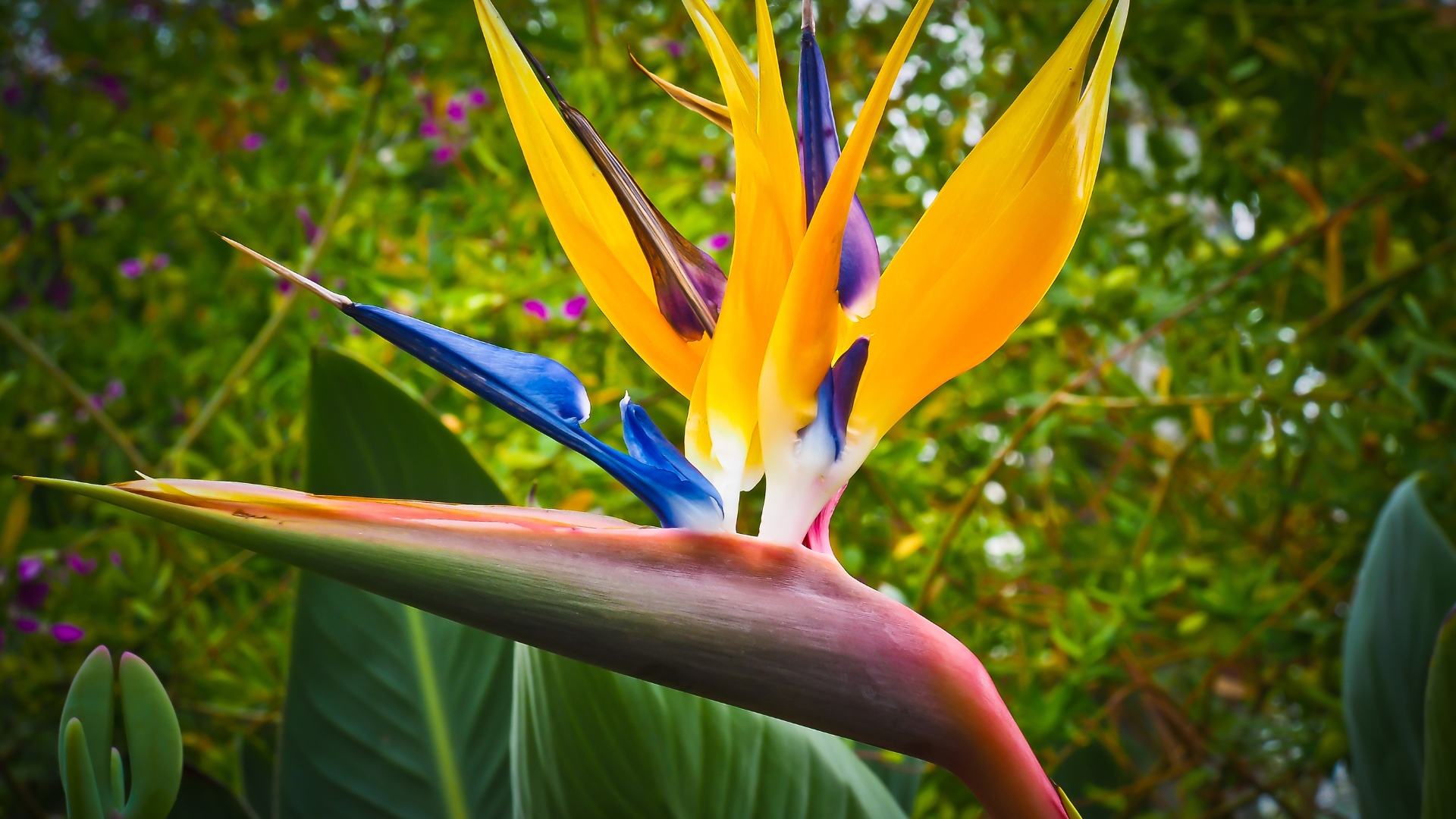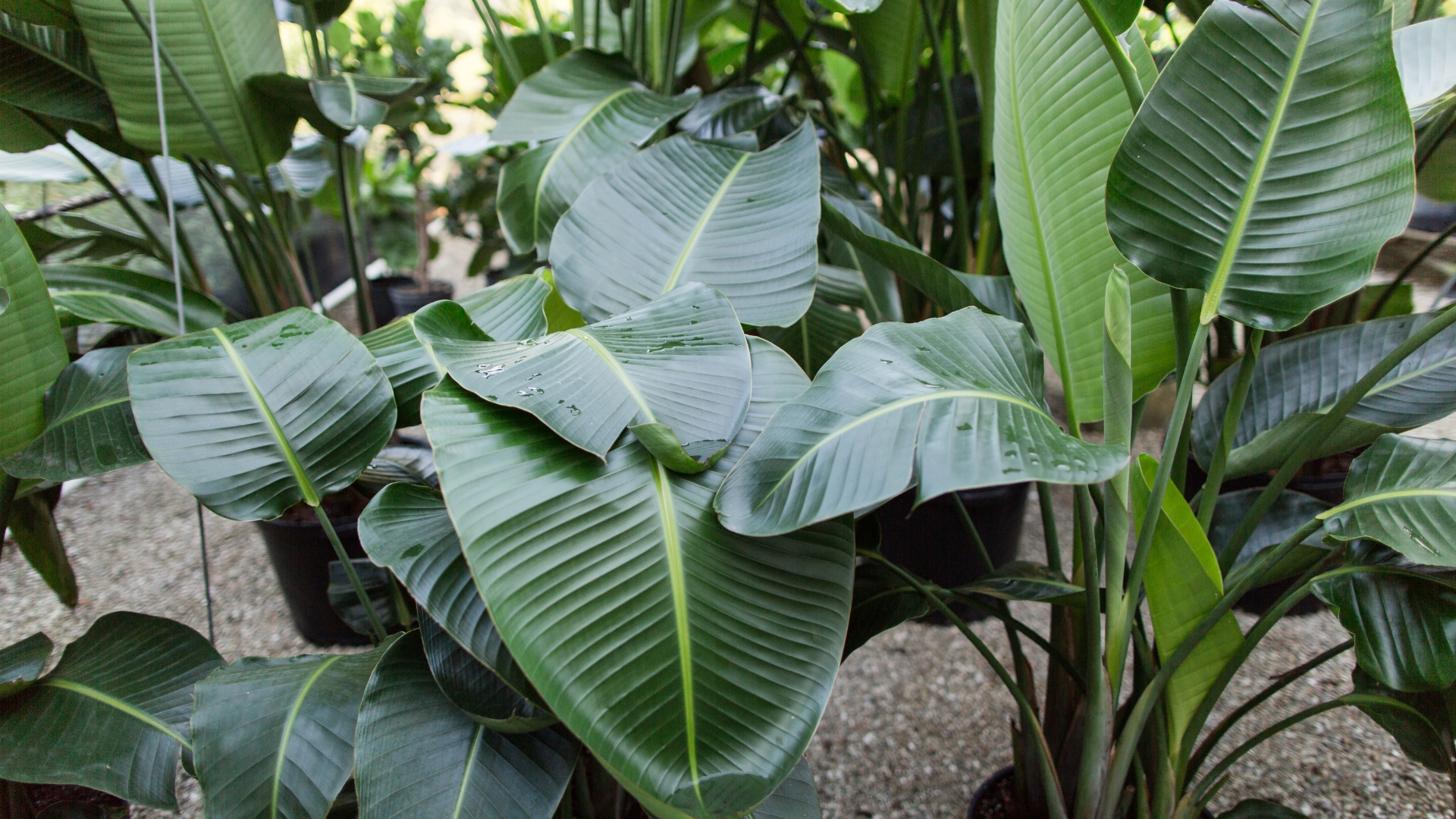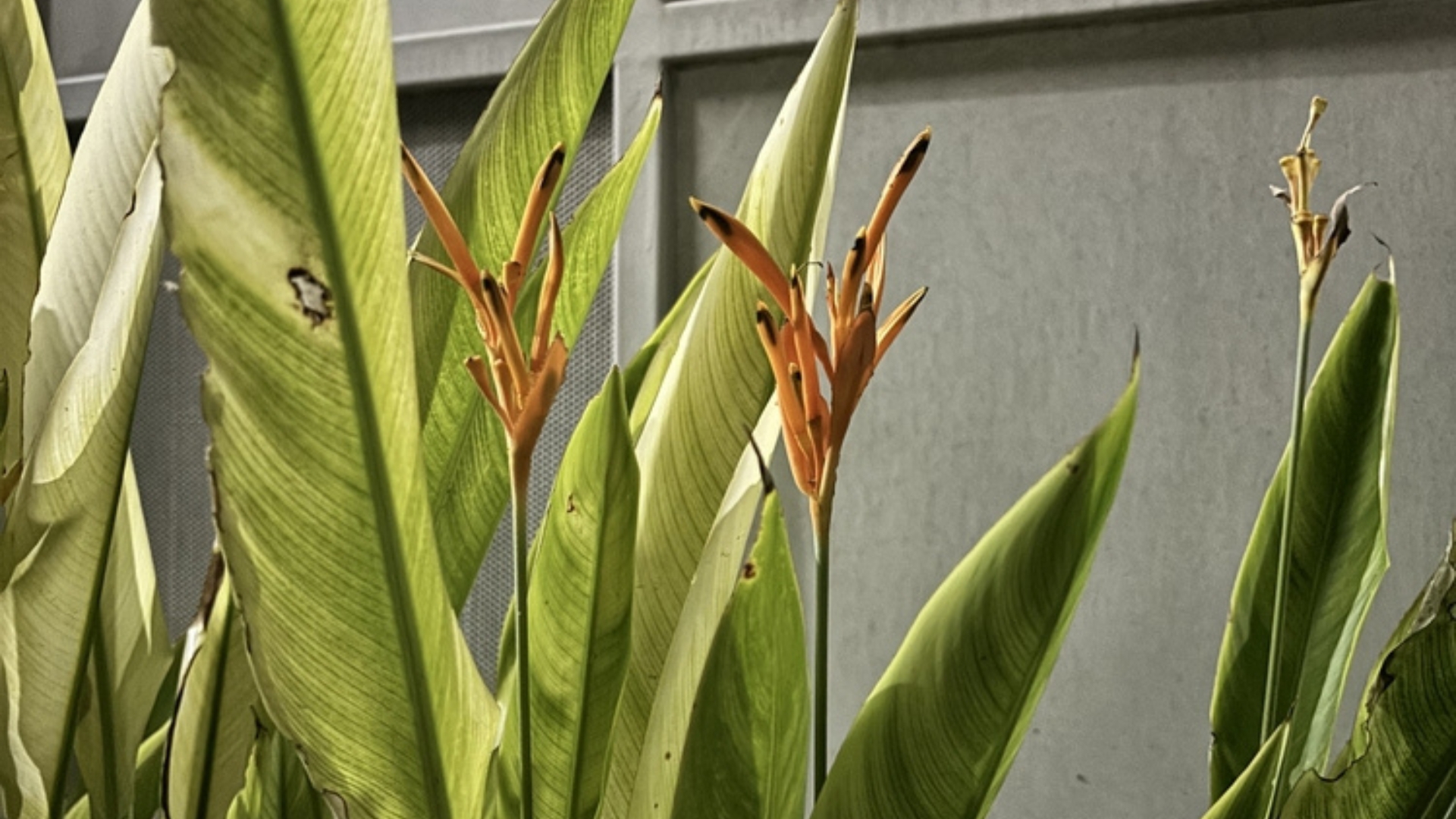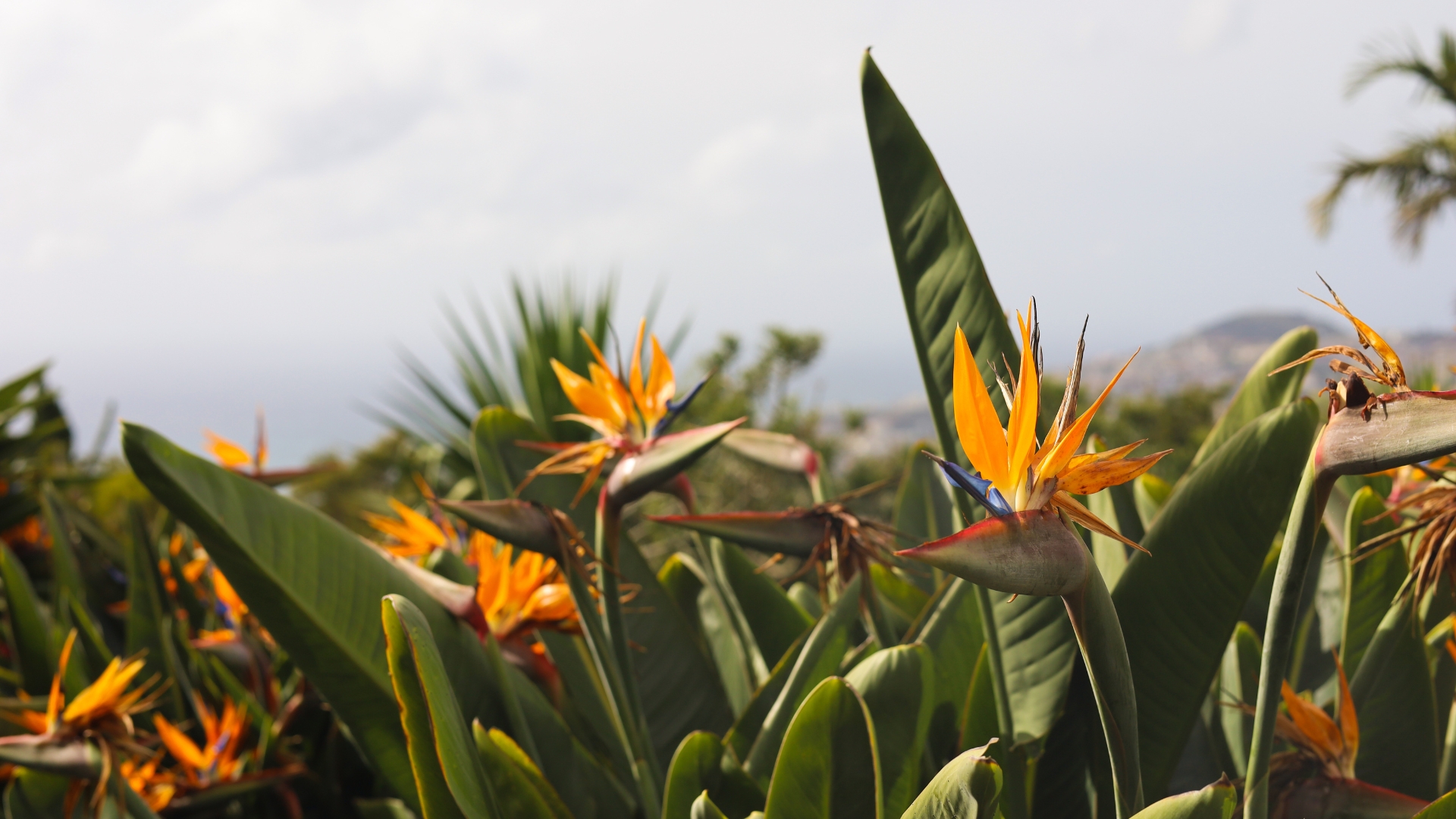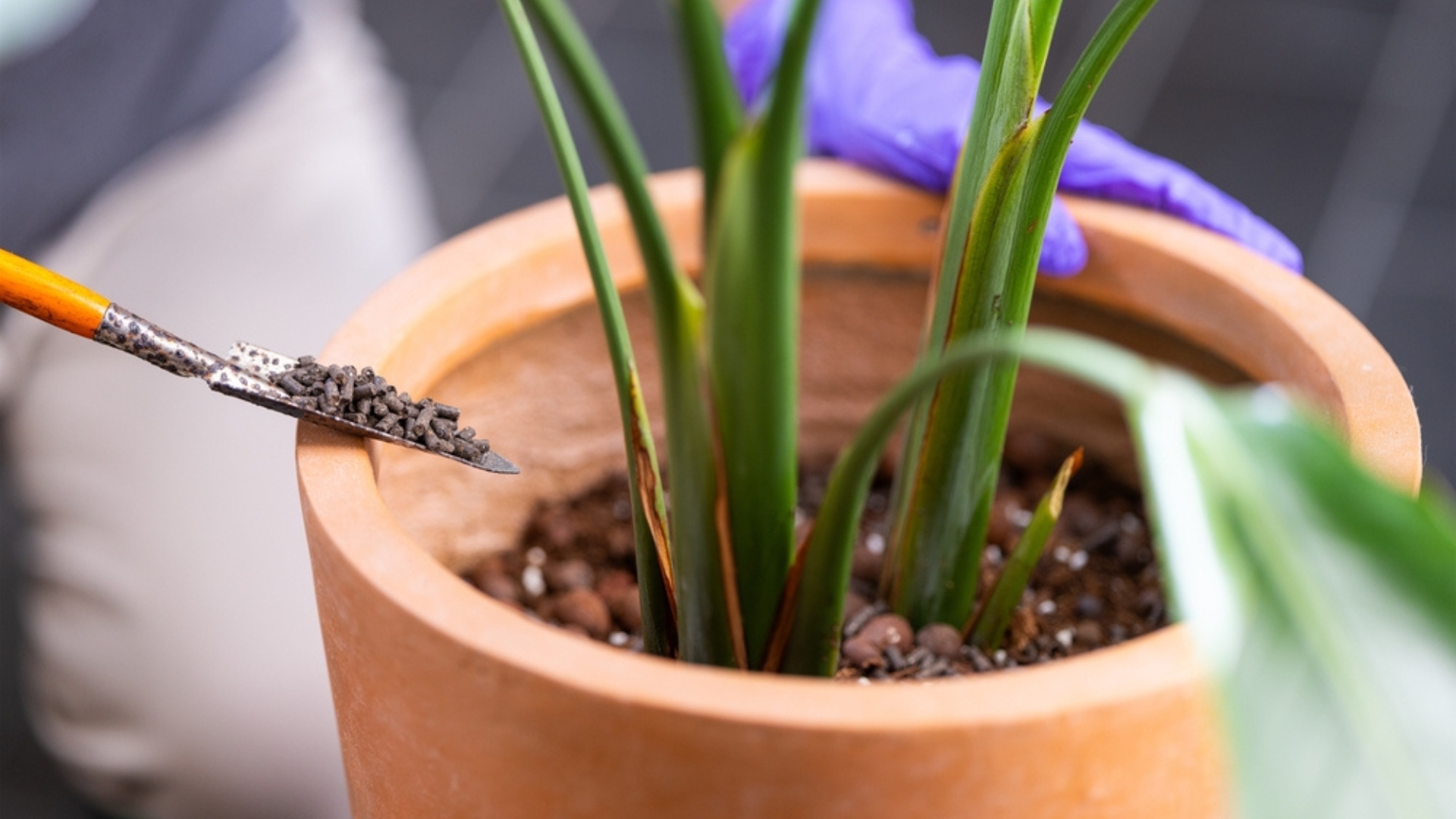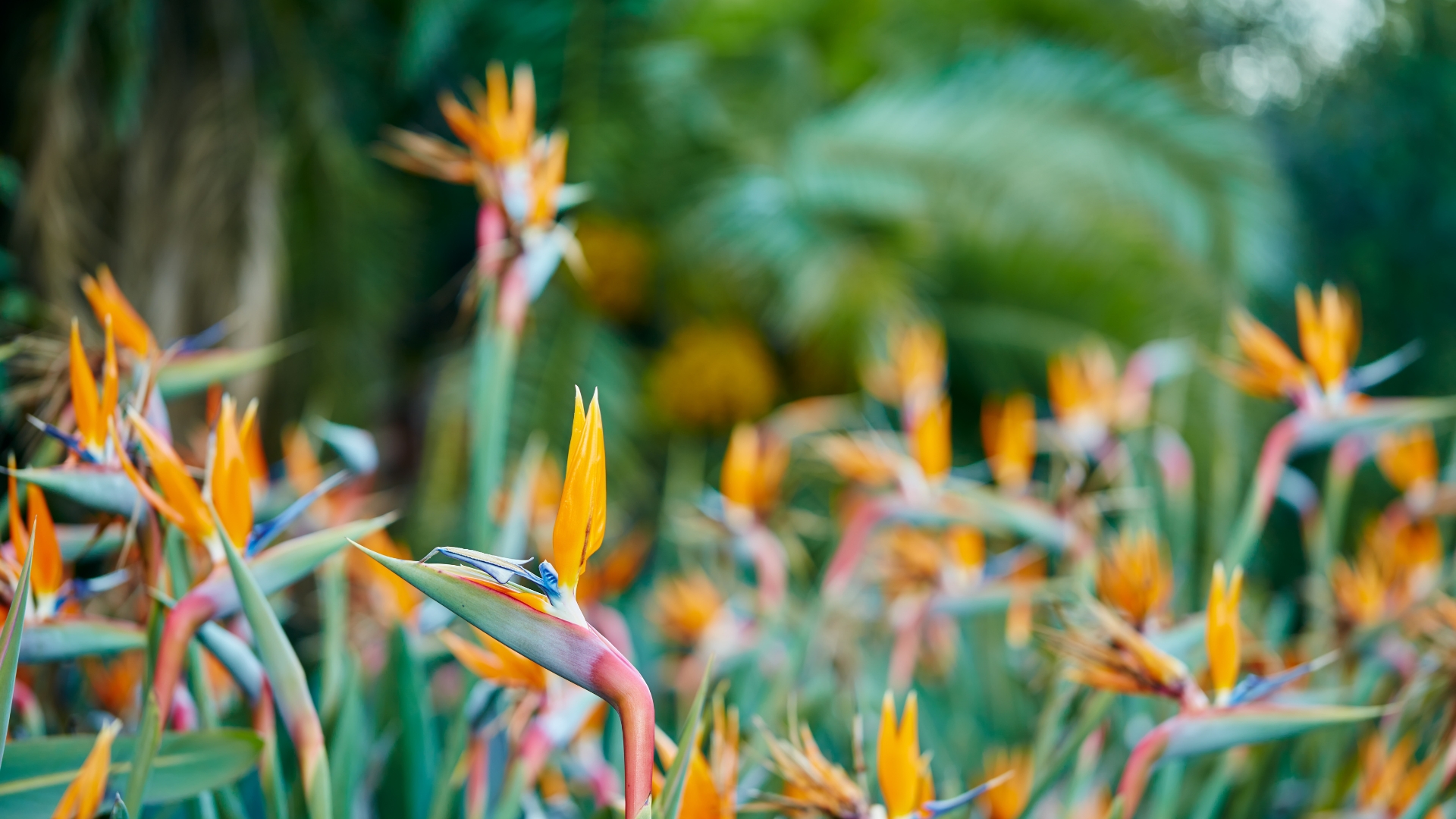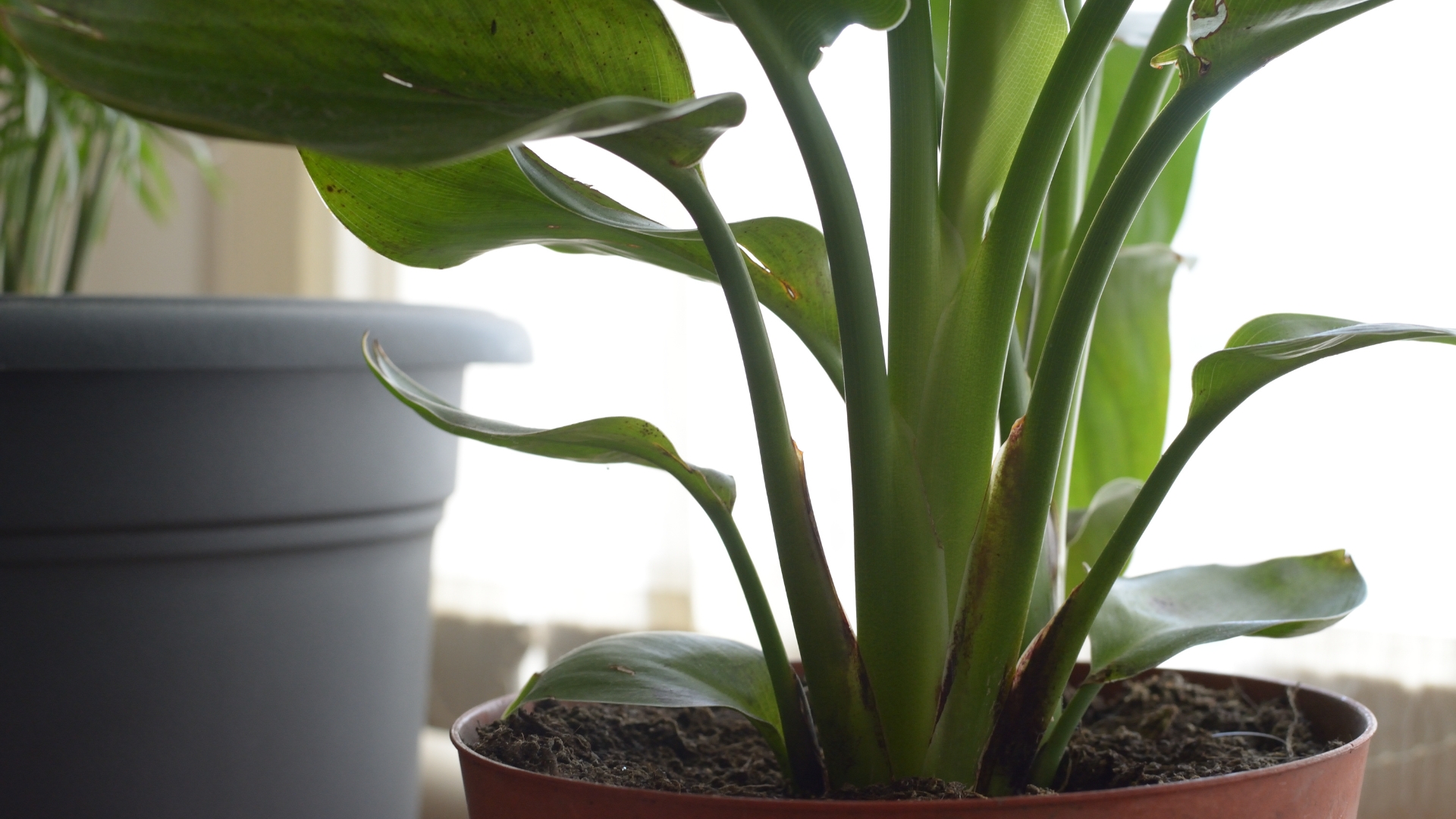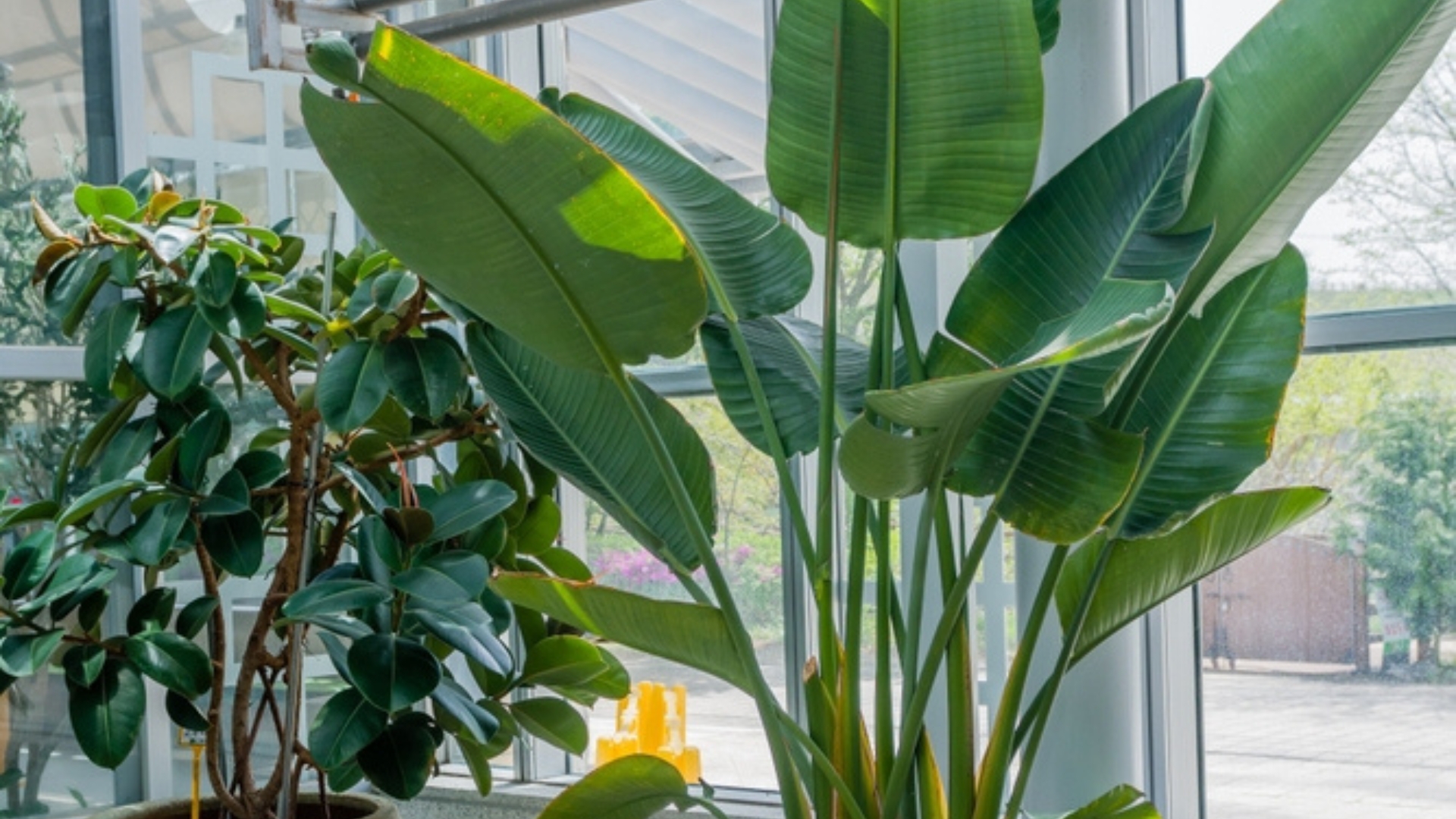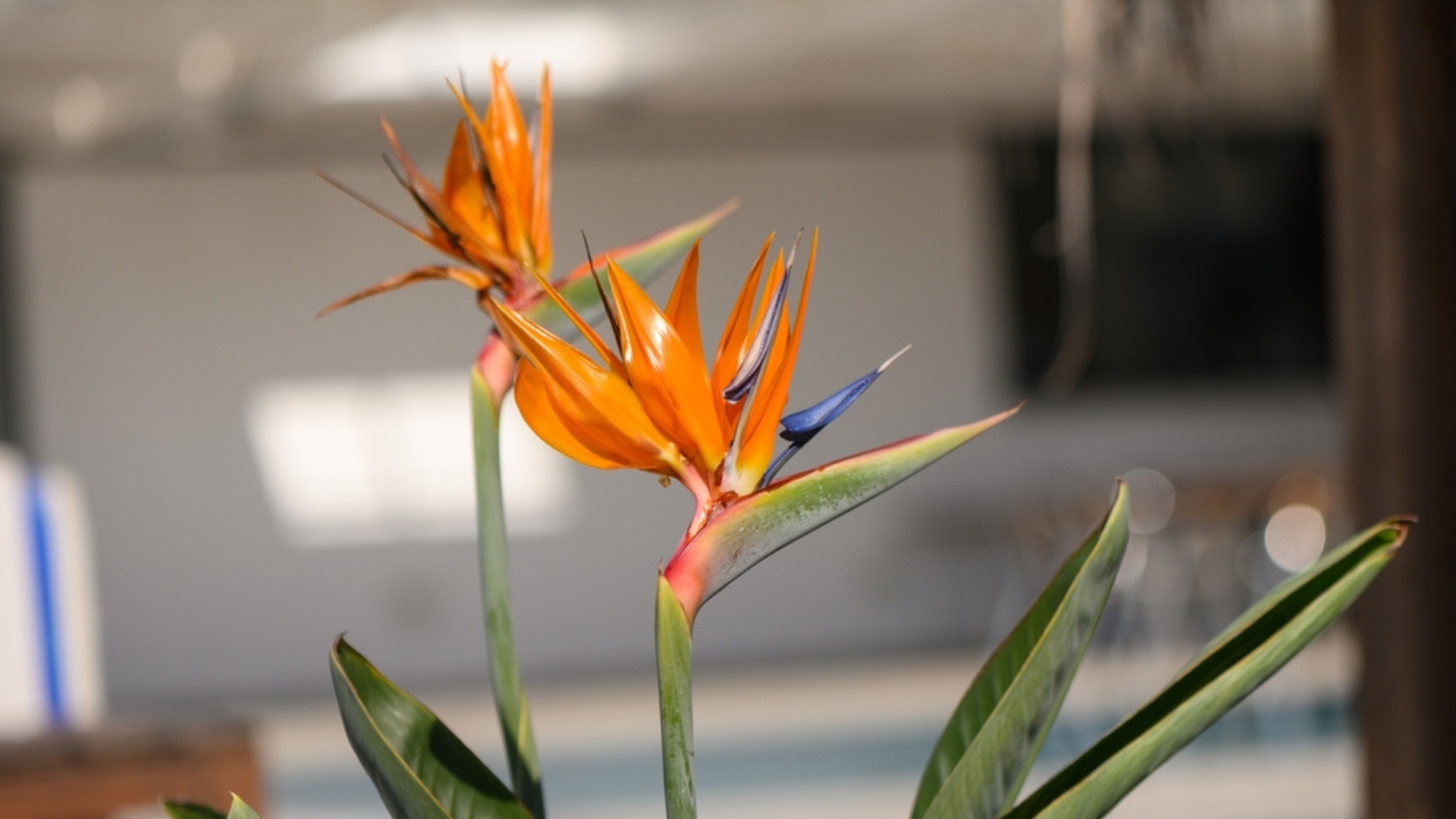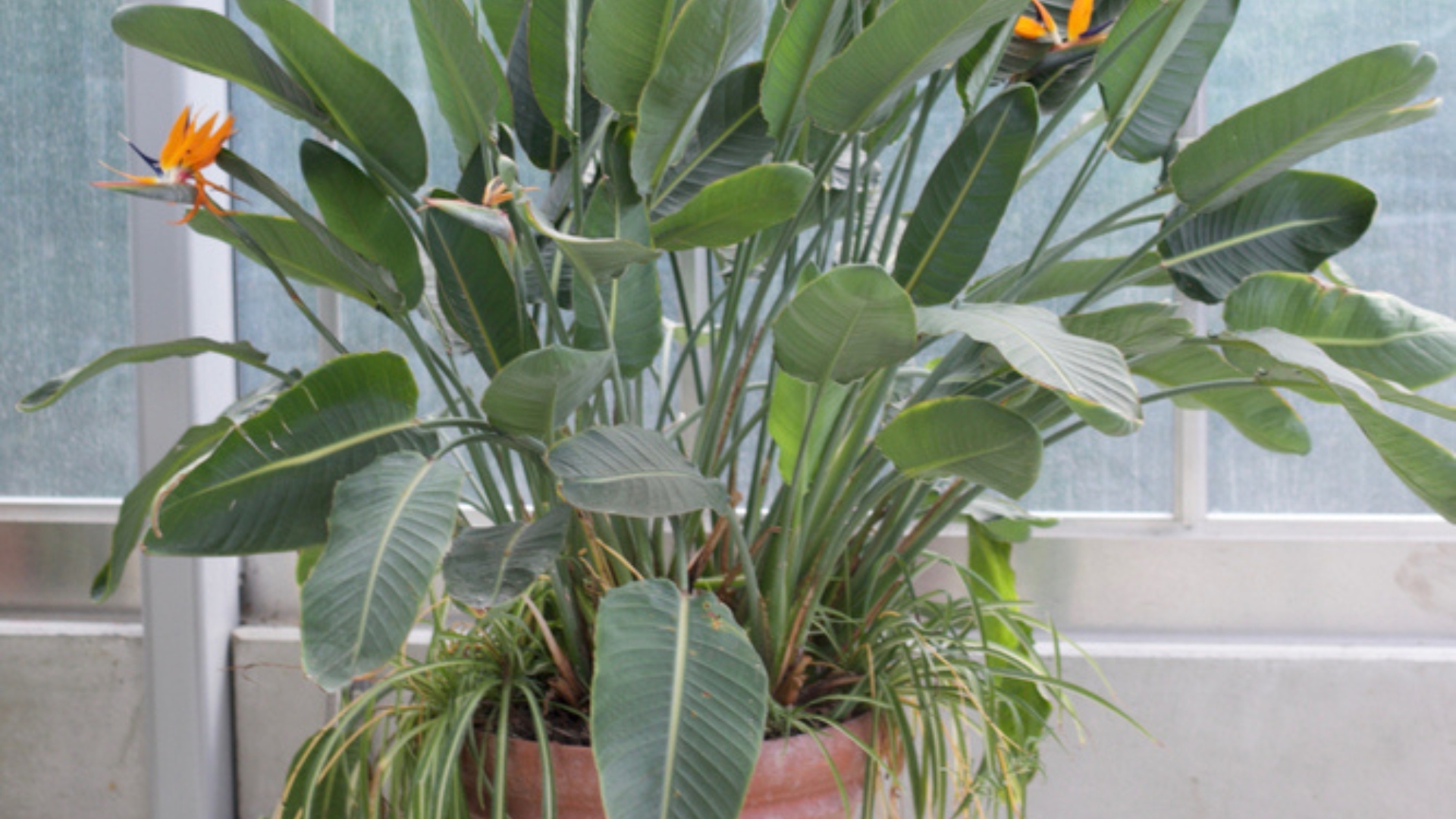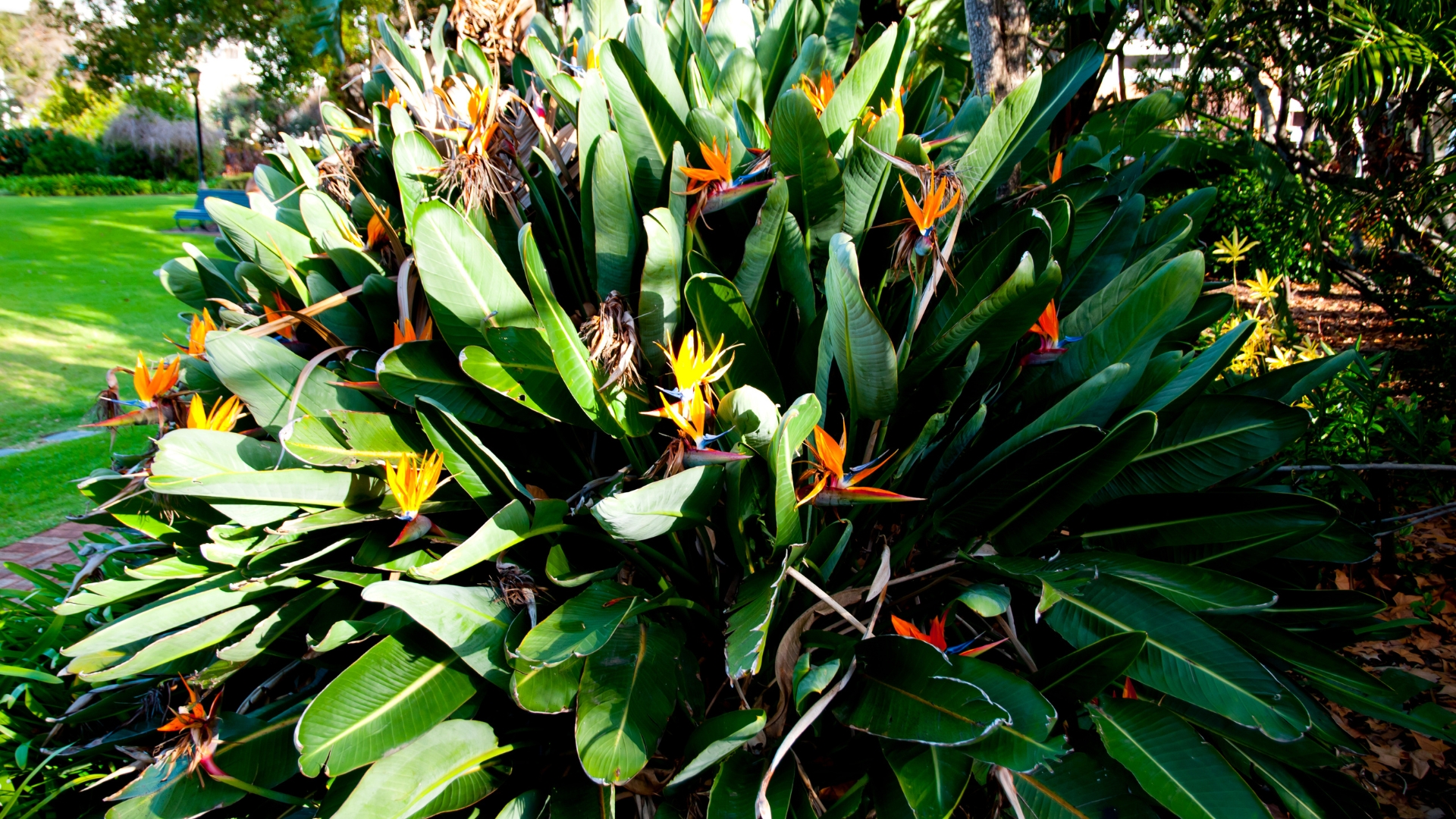Your Bird of Paradise should be stealing the spotlight with bold, tropical leaves—but instead, they’re curling like a wilting curtain.
Something’s off, and if you don’t step in, those once-stunning leaves will keep struggling. The good news?
This problem has a fix, and once you tackle it, your Bird of Paradise will bounce back, lush and thriving like the showstopper it’s meant to be.
Why Your Bird Of Paradise Has Curled Leaves?
Your Bird of Paradise is a tropical marvel, built to thrive under warm, humid conditions with just the right amount of moisture.
In its natural habitat, this plant enjoys steady heat, filtered sunlight, and air so thick with humidity that its leaves stay supple and strong.
But when grown outside the tropics—whether indoors or in drier climates—small changes in its environment can cause its broad, showstopping leaves to curl inward like they’re bracing for a storm.
It’s your plant’s way of telling you that something is off, and if left unchecked, those curled leaves can lead to stunted growth, brown edges, or even long-term stress.
Curling leaves usually signal an imbalance in watering, humidity, light, or nutrients—all of which tie back to the conditions your Bird of Paradise is used to.
The first step to solving the problem? Identify what’s out of sync. A quick evaluation of your plant’s environment—checking soil moisture, air quality, and sun exposure—will reveal what’s causing those leaves to curl.
Once you correct the issue, your Bird of Paradise will start to relax, and those majestic leaves will open up again
Bear In Mind That Curling Sometimes Happens Naturally
It’s easy to panic when you see curled leaves, but not all curling means trouble. New Bird of Paradise leaves naturally emerge curled before stretching open, protecting themselves as they grow. This is perfectly normal and doesn’t require intervention—just patience.
On the other hand, if older leaves stay curled or begin folding inward, something else might be going on.
Check humidity, water levels, and sunlight exposure to make sure your plant isn’t struggling. If everything looks good, your Bird of Paradise is likely just going through its natural growth cycle.
Where You Grow Your Bird Of Paradise Matters
Where you grow your Bird of Paradise plays a huge role in its health. Outdoors, it gets fresh air and plenty of space, but it’s also at the mercy of nature.
Strong winds can damage its broad leaves, sudden temperature drops can cause stress, and intense sun exposure might scorch its foliage.
If your plant is struggling outside, relocating it to a more sheltered, protected spot could make all the difference.
Indoors, you have complete control over temperature, humidity, and light, making it easier to maintain the ideal conditions.
But here’s the catch—everything needs to be just right. Too little light, dry air, or inconsistent watering can still cause issues. Whether inside or out, finding the perfect balance is key to helping your Bird of Paradise thrive.
High-Quality Soil Is Essential
When something’s off with your Bird of Paradise, the first place to look isn’t the leaves—it’s the soil.
Poor soil conditions can lead to weak growth, curling leaves, and even root rot. If the soil isn’t draining properly or lacks essential nutrients, your plant will struggle no matter how much light or water it gets.
Before making any other adjustments, checking and improving the soil should be your first step.
The ideal soil for a Bird of Paradise is rich, well-draining, and slightly airy. A mix of high-quality potting soil, sand, and perlite ensures that excess water won’t sit around the roots, while organic matter like compost or peat moss keeps it nutrient-rich.
Whether your plant is in a pot or in the ground, making sure the soil is the right balance of moisture retention and drainage will set the stage for healthy, vibrant growth.
Your Plant May Need Repotting
If your Bird of Paradise is curling its leaves and looking stressed, the problem might not be light, water, or humidity—it could be that it’s outgrown its pot.
When roots have no more space to stretch, they become compacted, making it harder for the plant to take in water and nutrients.
The result? Curling leaves, slow growth, and a plant that just doesn’t look as vibrant as it should. Repotting often fixes these issues almost instantly.
When was the last time you repotted your Bird of Paradise? If it’s been more than two to three years, it’s probably overdue.
This plant grows fast, and its roots need room to expand. Choose a pot that’s about 2 inches wider than the current one, and make sure it has proper drainage to keep roots healthy.
Once it settles into its new home, you’ll likely notice fresher, more open leaves in no time.
Fix Your Watering Schedule
When it comes to your Bird of Paradise, watering can make or break its health. If the leaves are curling, the first thing to check is whether you’re watering too much or too little.
Overwatering can suffocate the roots, causing them to rot, while underwatering leaves them dry and unable to absorb nutrients. Either way, your plant responds the same way—by curling its leaves as a cry for help.
So, how often should you water? In warmer months, once a week is usually enough, but always check the top two inches of soil before adding more water.
If the soil feels dry, it’s time to water deeply; if it’s still moist, hold off. In winter, your plant needs even less—watering every two to three weeks is often enough.
Is Your Bird Of Paradise Hungry
Your Bird of Paradise isn’t just thirsty—it’s hungry too! If curling leaves, slow growth, or pale foliage are appearing despite proper watering, nutrient deficiency might be to blame.
This plant thrives in rich, organic soil in the wild, but in pots or garden beds, the nutrients don’t replenish naturally. Over time, the soil becomes depleted, and the plant starts showing signs of hunger.
To fix this, feed your Bird of Paradise with a balanced fertilizer every four to six weeks from spring to early fall.
A nutrient-rich blend with nitrogen (for foliage), phosphorus (for strong roots), and potassium (for resilience) will give your plant the energy it needs to grow properly.
How Much Light Does It Get
Your Bird of Paradise needs plenty of light to stay healthy, but getting the balance right is crucial.
Too little light, and the leaves may curl, growth will slow, and the plant will look weak. Too much harsh direct sun, especially in hotter climates, can scorch the leaves, leaving them dry and damaged.
This plant is native to the tropics, where it enjoys bright, indirect sunlight for most of the day, with some exposure to gentle morning or late afternoon rays.
Take a moment to assess your plant’s location. If it’s indoors, is it near a bright window? If it’s outdoors, is it getting too much direct sun?
Ideally, Bird of Paradise plants need at least six hours of bright, indirect light daily. If yours isn’t getting enough, try moving it closer to a window, using grow lights, or relocating it to a sunnier spot outside.
If it’s getting too much intense midday sun, consider filtering the light with sheer curtains or providing partial shade.
Tropical Plants Enjoy High Humidity
Bird of Paradise plants thrive in the warm, humid conditions of the tropics, where moisture lingers in the air, keeping their broad leaves hydrated and supple.
But in a dry indoor environment, especially during winter or with constant air conditioning, humidity levels drop too low, and the leaves start curling to conserve moisture.
To keep your plant happy, check your home’s humidity levels. If it’s below 50%, you may need to increase moisture around your plant.
A humidifier, a pebble tray with water, or even occasional misting can help prevent dryness. When given the right humidity, your Bird of Paradise will bounce back with fresher, smoother, and healthier leaves.
Temperature Should Never Be Too Low
Tropical plants like the Bird of Paradise aren’t built for the cold. When temperatures drop below 50°F (10°C), the plant can go into shock, causing leaves to curl, edges to dry out, and growth to slow.
While short-term cold exposure might not be fatal, prolonged chilly conditions can weaken the plant over time.
If you notice curling or browning leaves, check your plant’s placement. Is it sitting near a draft, an air vent, or an open doorway?
Sudden bursts of cold air can cause stress. Keep it between 65°F and 85°F (18°C to 29°C) and avoid drastic temperature changes.
When Can You Expect Results
Look, I know that all these adjustments—watering, humidity, repotting, and light—might seem like a lot, but trust me, it’s worth it.
Your Bird of Paradise is a resilient plant, and once you give it the right care, it will reward you with strong, open leaves and steady growth. But don’t expect overnight miracles—plants take time to recover and adjust to new conditions.
If you’ve fixed watering issues, you might notice some improvement in just a week or two. Adjusting humidity and light?
Give it a few weeks for new, healthier leaves to emerge. Repotting takes a little longer—about a month for the roots to settle and support fresh growth. The key is consistency.
As long as you stick to the right care routine, your Bird of Paradise will bounce back, and those curling leaves will be a thing of the past.

